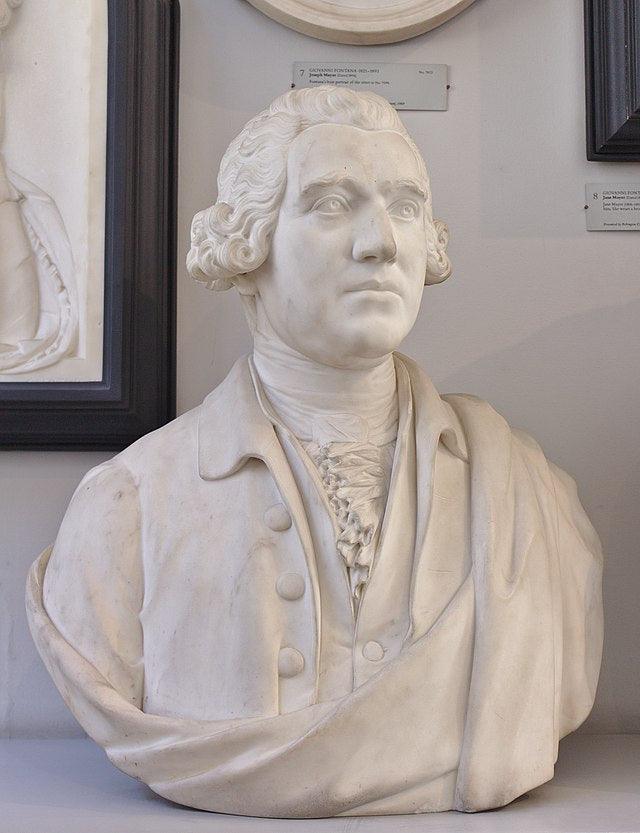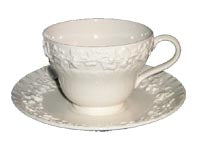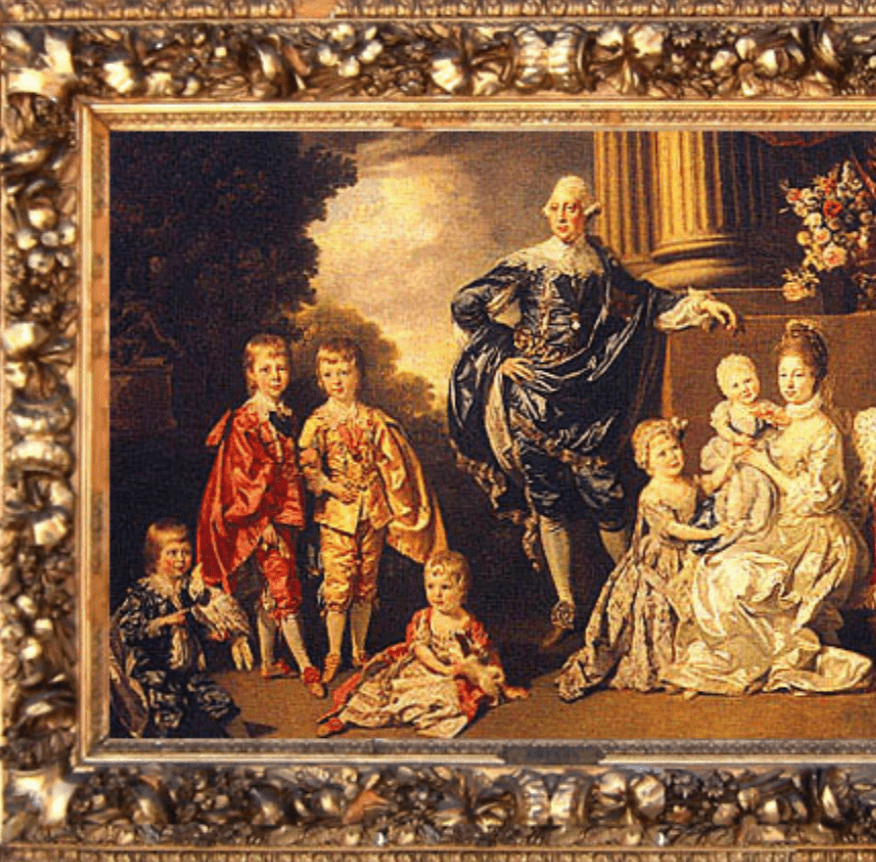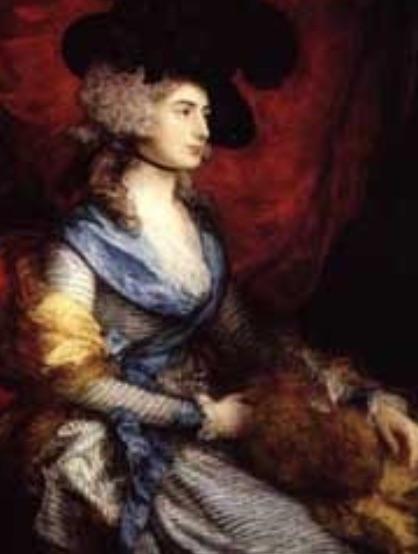
Josiah Wedgewood and the Birth of English Pottery
The elegance of the breakfast set forced itself on Catherine’s notice when they were seated at table; and, luckily, it had been the general’s choice. He was enchanted by her approbation of his taste, confessed it to be neat and simple, thought it right to encourage the manufacture of his country; and for his part, to his uncritical palate, the tea was as well flavoured from the clay of Staffordshire, as from that of Dresden or Sêvre. But this was quite an old set, purchased two years ago. The manufacture was much improved since that time; he had seen some beautiful specimens when last in town, and had he not been perfectly without vanity of that kind, might have been tempted to order a new set. He trusted, however, that an opportunity might ere long occur of selecting one — though not for himself. Catherine was probably the only one of the party who did not understand him. --Northanger Abbey
It is often remarked that Jane Austen made no reference to current events in her work; and yet, it seems that the quote above must refer to the many improvements in English pottery introduced by Josiah Wedgwood and his descendants. Let us examine the many advances Josiah Wedgwood (1730-95) brought to English pottery in Staffordshire.  Wedgwood introduced a superior inexpensive clear-glazed creamware pottery in 1764. The excellence of his product soon attracted a wide market for Wedgwood pottery. When George III’s wife, Queen Charlotte, ordered a tea set Wedgwood rechristened creamware as Queen’s ware in the first celebrity marketing campaign. The next improvement introduced by Wedgwood was a canal passing by his pottery which connected the Trent and Mersey Rivers. This Grand Trunk Canal facilitated inexpensive and low breakage shipment of his pottery from Staffordshire, with its clay deposits, to the London market. With the help of Wedgwood’s friend Thomas Bentley, the bill authorizing the canal passed Parliament in 1766. The canal reached completion in 1777.
Wedgwood introduced a superior inexpensive clear-glazed creamware pottery in 1764. The excellence of his product soon attracted a wide market for Wedgwood pottery. When George III’s wife, Queen Charlotte, ordered a tea set Wedgwood rechristened creamware as Queen’s ware in the first celebrity marketing campaign. The next improvement introduced by Wedgwood was a canal passing by his pottery which connected the Trent and Mersey Rivers. This Grand Trunk Canal facilitated inexpensive and low breakage shipment of his pottery from Staffordshire, with its clay deposits, to the London market. With the help of Wedgwood’s friend Thomas Bentley, the bill authorizing the canal passed Parliament in 1766. The canal reached completion in 1777.  A London Wedgwood showroom was first opened in early 1768 at the corner of Great Newport Street and Saint Martin’s Lane, which stood near the Thames docks to allow easy transfer of the pottery. The suave Bentley was soon placed in charge of the showroom. Mrs. Byerley, the wife of Wedgwood’s nephew, wrote that Newport Street was so crowded that there was “no getting to the door [of the Wedgwood shop] for coaches.”
A London Wedgwood showroom was first opened in early 1768 at the corner of Great Newport Street and Saint Martin’s Lane, which stood near the Thames docks to allow easy transfer of the pottery. The suave Bentley was soon placed in charge of the showroom. Mrs. Byerley, the wife of Wedgwood’s nephew, wrote that Newport Street was so crowded that there was “no getting to the door [of the Wedgwood shop] for coaches.”
The Wedgwood London showrooms were a huge success. By 1773, the stock Wedgwood offered had reached such diversity of style and forms that a catalog was offered. The showroom moved to York Street in Saint James’s Square in Westminster in 1774, to follow the westward expansion of fashionable Mayfair.  Wedgwood developed yet another new ceramic by 1768 know as black basalt. The pieces were decorated with matte fired colors to resemble the height of current taste embodied in the engravings of Sir William Hamilton’s collection of red-figure Greek vases that had been depicted in the 1766-7 publication Collection of Etruscan, Greek and Roman Antiquities from the Cabinet of the Honourable Wm. Hamilton. Wedgwood basaltware would soon grace the Neo-classical library designed by Robert Adam for Bowood House, and Neo-classical rooms in Kenwood House and Derby House.
Wedgwood developed yet another new ceramic by 1768 know as black basalt. The pieces were decorated with matte fired colors to resemble the height of current taste embodied in the engravings of Sir William Hamilton’s collection of red-figure Greek vases that had been depicted in the 1766-7 publication Collection of Etruscan, Greek and Roman Antiquities from the Cabinet of the Honourable Wm. Hamilton. Wedgwood basaltware would soon grace the Neo-classical library designed by Robert Adam for Bowood House, and Neo-classical rooms in Kenwood House and Derby House.
Wedgwood also worked with manufacturer and engineer Matthew Boulton to bring automation to his factories to increase production. The innovative Boulton had bankrolled James Watt’s development of the steam engine.  After 5,000 attempts, Wedgwood developed his greatest creation—Jasperware--in 1775. A cameo patterned pottery with the translucence and tonal qualities of porcelain that was inspired by a fine example of Roman cameo glass owned by Sir William Hamilton. The vase would subsequently be purchased by the Duchess of Portland, a famous collector, and become known as the Portland Vase.
After 5,000 attempts, Wedgwood developed his greatest creation—Jasperware--in 1775. A cameo patterned pottery with the translucence and tonal qualities of porcelain that was inspired by a fine example of Roman cameo glass owned by Sir William Hamilton. The vase would subsequently be purchased by the Duchess of Portland, a famous collector, and become known as the Portland Vase.
Artists employed by Wedgwood Potteries produced many famous design motifs. John Flaxman produced his most famous Wedgwood design “Dancing Hours” in 1778. In 1780, artist George Stubbs, known for his remarkable renderings of horses, created the “Fall of Phaeton.” Lady Elizabeth Templeton designed a jasperware coffee service for the Wedgwood Potteries in 1787. Lady Diana Beauclerk designed many cupid motifs for Wedgwood. General Tilney refers to Dresden teacups in the quote that began this article. It was under the commission of Augustus the Strong in the city of Dresden that the secret of hard paste porcelain, previously only know to Chinese and Japanese craftsmen, was actually discovered in Europe. The first European porcelain-producing factory, however, was actually begun fifteen miles away in the city of Meissen, in 1710. The clay deposits in the Meissen area were one of the keys to the successful production of the porcelain. But by the mid-1700's, the new technique was being copied in England and France.
 The Sevres Porcelain Factory, originally founded in 1738 at Chateau de Vincennes, became a royal monopoly under the regime of Louis XV around 1759. Sevres Porcelain was known for its gilding over a colored body. The company foundered during the French Revolution. The factory came under the management of the French Revolutionary government in 1798.
The Sevres Porcelain Factory, originally founded in 1738 at Chateau de Vincennes, became a royal monopoly under the regime of Louis XV around 1759. Sevres Porcelain was known for its gilding over a colored body. The company foundered during the French Revolution. The factory came under the management of the French Revolutionary government in 1798.
Under Napoleon, a new administrator was appointed to head the Sevres Porcelain Factory in 1800--Alexander Brongniart, a scientist skilled in chemistry, botany, zoology, and geology. Though he had no experience in the making of porcelain, Brongniar brought strong leadership and new direction to the factory. The Sevres Porcelain Factory became even more successful.  Josiah Wedgwood died in 1795 just before Jane Austen wrote her first draft of Northanger Abbey. The numerous innovations and new developments in his field make
Josiah Wedgwood died in 1795 just before Jane Austen wrote her first draft of Northanger Abbey. The numerous innovations and new developments in his field make
Josiah Wedgwood the most important potter of any day, little lone Jane Austen’s lifetime. His showrooms on York Street continued to be successful after his death. The London print maker Ackermann produced a print of the popular showroom in 1809; and ladies often rendezvoused at the Wedgwood showrooms throughout the Regency. Jane Austen advised her niece not to write of anything of which she did not have personal knowledge; so we can assume Jane Austen found Wedgwood pottery “neat and simple.”
Sharon Wagoner is Curator of The Georgian Index. Visit this site for a historical tour through Regency London! Enjoyed this article? Browse our book shop at janeaustengiftshop.co.uk
If you don't want to miss a beat when it comes to Jane Austen, make sure you are signed up to the Jane Austen newsletter for exclusive updates and discounts from our Online Gift Shop.



Leave a comment
This site is protected by hCaptcha and the hCaptcha Privacy Policy and Terms of Service apply.